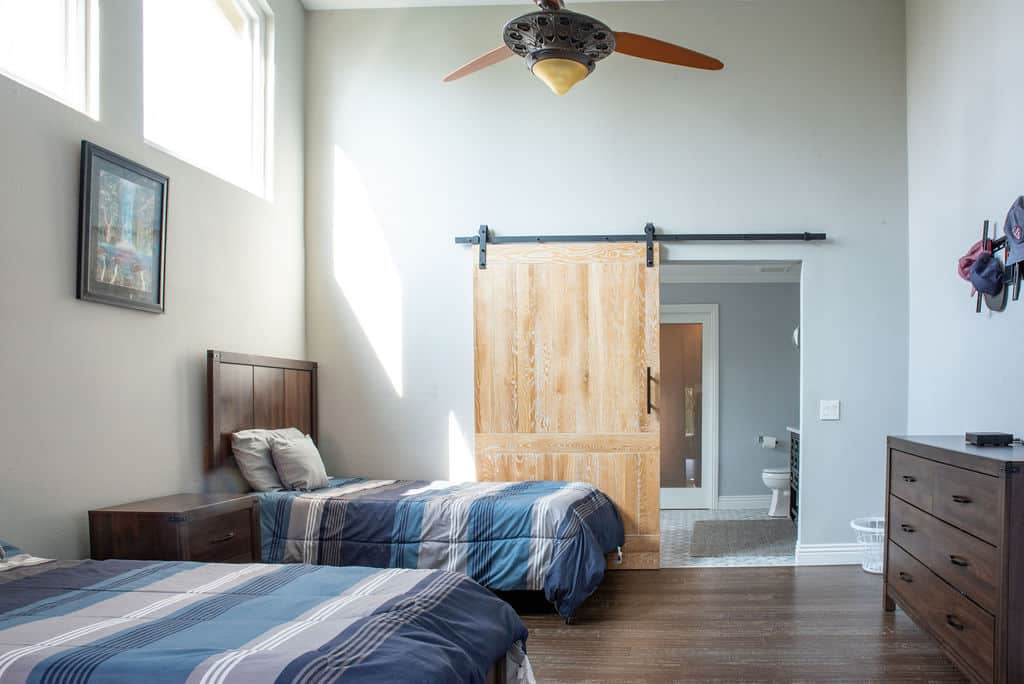Sober living is a popular recovery option for former users who have completed primary treatment (i.e. rehab/detox) for substance abuse. Sober living home residents don’t just get a temporary home, they focus on creating a new lifestyle.
What is a sober living home like? For starters, it teaches former users how to function in the regular world without having to lean on substance abuse to get them through the day. This main goal of all sober living houses is to instill a sense of strength and to develop the skills to deal with life’s daily challenges.
Sober living is a bit different than independent living and this can take some adjustment. While residents understand that strict house rules exist to serve their sobriety, the transition may be problematic. The idea is to create structure and to surround the resident with a sense of community. Other residents in the sober living home are at different stages of their recovery and the more experienced residents help to mentor the new arrivals. This peer-support system is very helpful.
Sober living is the best choice for life after addiction and detox and is considered to be one of the more effective addiction treatment programs.
Typically, substance abusers lived life as a different person when they were using. All addicts chase the reward of euphoria, which effectively suppresses their ability to reason. Their need was not just to avoid real life, but also to escape it indefinitely. This need to feel no pain drove them to use substances that would alter their consciousness. This rewires the brain and when addiction takes over, addicts will stop at nothing to keep the high going, even at the cost of their health, life, and future.

How Sober Living Works
After an intake process, primary treatment, and completing detox, recovering addicts are offered the opportunity to continue their recovery in a sober living home. By doing so, they not only give themselves a much better chance of maintaining sobriety but also they are giving themselves exposure to a healthy life experience. Sober living homes go to great lengths to ensure residents are free from potential triggering stressors and temptations to use drugs or alcohol.
During sober living intake procedures, general information about the resident’s health, addiction history, and mental health conditions is gathered, in addition to data related to substance usage and plans. Questions often asked are about the last time drugs or alcohol were used, existing medical conditions, and if the applicant is under a physician or a center’s care. School, job, and criminal background questions are also standard. This is done without judgment. Since nearly every staffer at a sober living home has either been through recovery or has dealt with hundreds of people who have been through it, you can rest assured that they’ve heard it all.
Questions vary based on the type of house and their methodologies, but ultimately they want to get a clear picture of your history and discuss your goals for sober living. Intake specialists will do their best to help individuals find the right treatment programs for them.
What Is a Sober Living Home Like?
Typically, sober living houses have a house manager who runs daily operations and oversees residents. However, as the need for sober living develops, more homes are adding to their services to provide the best care. Some sober living homes employ a complete staff so that residents will have assistance at all times, but most rely on the community approach, using the power of fellowship in support of daily therapy and counseling sessions.
Resident managers create an added benefit. Residents will be assured if they have addiction urges and are unable to get in touch with their sponsor. An overnight manager ensures that they will have support to turn to. On-site staff may not be medical professionals, but they are trained in the ins and outs of addiction and recovery. They are there 24 hours a day and have access to all the support resources necessary to ensure sobriety.

Success Rates of Sober Living Residents
Sober living homes have higher than average success rates when compared to other options. Maintaining sobriety can be problematic due to the biological components of chemical dependency, but with support and access to resources, the chances are even better. Sober living homes have even greater success rates if patients choose to stay longer. Typically, patients who stay six months increase their chances markedly and those who choose to stay nine months or longer have an even greater success rate.
This makes sense if you think about it. Most individuals who abuse substances have been struggling with addiction for years. It’s simply not reasonable to suggest that 60 days of treatment will undo years of addiction. The brain needs time to rewire itself. Emotional problems as underlying causes must be dealt with. Those with some form of mental illness, whether it’s depression or something else, need time to stabilize, get a proper diagnosis, and develop a treatment plan.
The peaceful and orderly environment of a sober living home requires adherence to house rules. Random drug testing keeps residents focused on the goal of staying sober. It is also the central element of sober living’s purpose for existence.
Day-to-Day Life at a Sober Living Home
Sobriety depends on structure, routines, and rules in order to eliminate outside influences and to reduce the feelings of seclusion. Those moments can trigger a relapse, so day-to-day life in sober living requires a schedule. Sober living encourages routines that place importance on treatment, for both addiction and other mental health illnesses.
Daily life may require residents to participate in house activities, chores, or group activities. Sober living houses may permit residents to leave for work or school. Most facilities call this option “outpatient treatment.” But often therapy, twelve-step meeting attendance, and participation in a house activity are incremented parts of daily life. These may include:
- Cognitive-behavioral therapy
- Dialectical behavior therapy
- Adventure therapy
- Yoga therapy
- Vocational development programs
Day-to-day life in sober living is organized with activities and treatments that positively affect the mind, body, and spirit. However, an emphasis on self-care, healing, and sobriety are the permanent aspects of daily life. Residents learn how to live healthily in preparation for leaving sober living.
Residents do have to abide by the curfew and strict visitor policy.
Types of Sober Living Support
Sober living may be community-focused residences, which center on creating bonds through peer recovery and support. Homes often create an extra sense of group togetherness through outdoor excursions, wellness classes, twelve-step meetings, and group therapy. All sober living homes strongly recommend, if not require, regular twelve-step meeting attendance, due to its success rates with recovery.
Group therapy can find solutions for dealing with depression, anxiety, loss, and stress from addiction. The exchanges in group therapy aim to foster a sense of understanding and support. By hearing others’ stories connected to their addiction or connected to experiences that made it difficult to quit, individuals feel less alone. They know that they are not the only ones struggling. Group therapy can also increase empathy and patience, leading to better characteristics for the whole community.
Looking Towards the Future
The best thing that sober living homes do is that they equip residents with the tools they need to live a healthy life. This includes diet, mental health, managing emotions, problem-solving, and functioning in today’s world. Through joint therapy, a resident’s thought processes will change. While the prospect of not having the crutch of drugs or alcohol may have been daunting, sober living introduces people to a new way of life.
Sober living houses provide mentorship and assistance in restarting one’s life. Homes may provide guidance in re-enrolling in school, establishing career interests, finding job prospects, or putting together a resume. Your sober living home may offer vocational training, along with employment placement services, job training, and more.
Psychotherapy, career counseling, life coaching, and goal-setting are tools that help residents look to the future with excitement, not fear. Sober living teaches residents how to be present and how to thrive in their new life.

Start Life Again with Renaissance Recovery Today
If you’re ready to start life again as a sober living home resident, contact Renaissance Recovery Center. We offer a variety of addiction treatment options, including:
- Xanax Addiction Treatment
- Alcohol Addiction Treatment Program
- Meth Addiction Treatment Program
- Heroin Addiction Treatment Program
- Cocaine Addiction Treatment Program
To learn more about life at sober living homes and our rehabs in Florida or California, contact us today.









